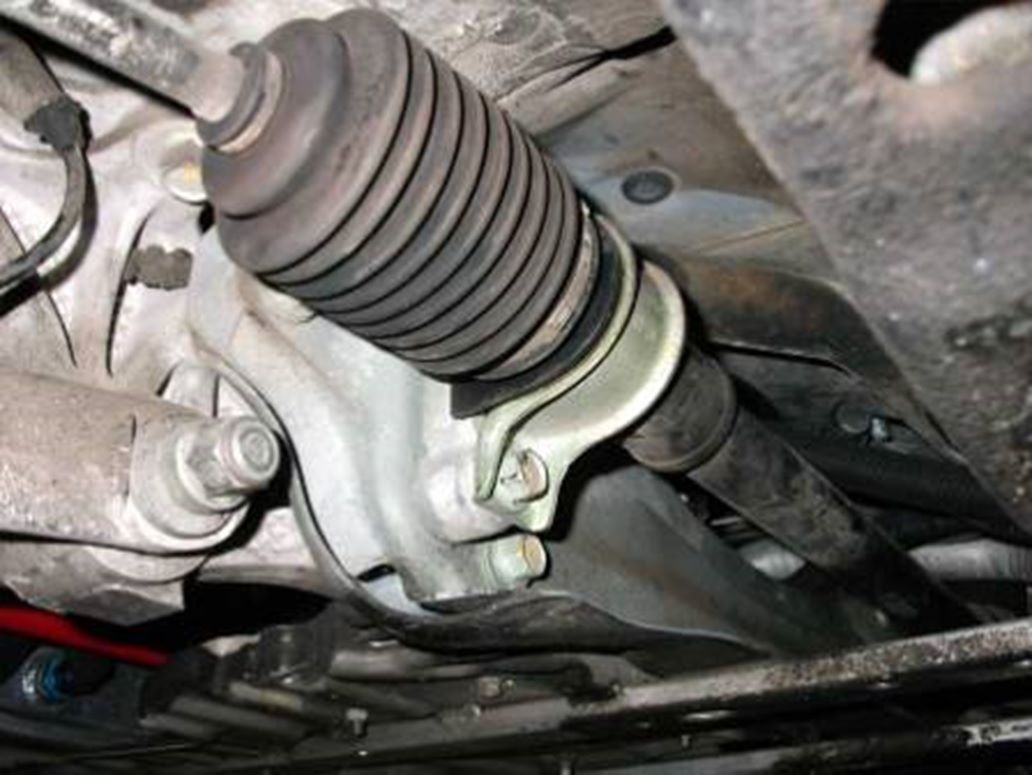
The Honda Civic X, which represents the 10th generation of the iconic compact sedan, is known for its reliability, performance, and practicality. However, like all vehicles, the Civic X is not without its issues. One of the commonly reported problems with the Honda Civic X is related to the steering rack end, a critical component of the steering system. In this post, we'll dive into the technical aspects of this issue, explain why it occurs, and provide insight into the benefits of replacing the faulty steering rack end.

What is the Steering Rack End?
Before we discuss the problem in detail, it’s important to understand what the steering rack end is and how it functions. The steering rack end is part of the steering mechanism that connects the steering rack (which is responsible for turning the wheels) to the steering linkage (which translates the driver's input into wheel movement). Essentially, it acts as an interface between the rack and the steering arms, allowing for smooth turning and precise vehicle control.
The steering rack end typically consists of a metal rod with a ball joint at either end that enables rotation. This part is critical for ensuring that the vehicle responds appropriately to driver input and handles well.

The Honda Civic X Steering Rack End Problem
The steering rack end issue in the Honda Civic X generally manifests as a problem with steering responsiveness or unusual sounds coming from the steering system. The most common symptoms include:
Steering Play or Excessive Looseness: Drivers may notice that the steering wheel feels loose or unresponsive, especially when making slight adjustments. This often happens because the rack end becomes worn or damaged, resulting in an inability to maintain proper tension and alignment in the steering mechanism.
Clunking Noises: If the ball joints or bushings in the steering rack end wear out, drivers may hear clunking, popping, or knocking noises, especially when turning or driving over bumps. This noise typically indicates that the steering components are loose and are not functioning as designed.
Uneven Tire Wear: Worn-out steering rack ends can cause misalignment in the wheels, leading to uneven tire wear. This can affect both tire lifespan and vehicle stability, as it prevents the wheels from aligning properly when the steering is turned.
Difficulty Steering or Tight Steering: In some cases, the steering rack end may cause the steering to feel stiff or difficult to turn, particularly at low speeds or while maneuvering in tight spaces. This is typically due to a loss of lubrication or an internal failure within the rack end assembly.
What Causes the Steering Rack End Problem?
The primary cause of steering rack end failure in the Honda Civic X is wear and tear over time. The ball joints and bushings within the steering rack end are exposed to continuous movement, friction, and environmental factors, all of which can contribute to degradation. Some specific reasons for failure include:
Exposure to Road Debris and Salt: Road salt, dirt, water, and other debris can accumulate in the steering components, causing corrosion and accelerating the wear of ball joints and bushings.
Excessive Driving Conditions: Extended periods of aggressive driving, such as hard cornering, quick maneuvers, or driving on rough, uneven roads, can lead to premature wear on steering components.
Manufacturing Defects: While less common, some steering rack ends may fail earlier due to defects in the material or manufacturing process.
The Consequences of Ignoring the Problem
If the steering rack end issue is left unresolved, it can lead to more severe problems. A loose or unresponsive steering system can compromise vehicle control, increasing the risk of accidents. Moreover, driving with damaged steering components can lead to misalignment, excessive tire wear, and even further damage to the steering rack itself, which can be significantly more expensive to repair.
Why You Should Replace the Steering Rack End
Replacing a worn or damaged steering rack end is crucial to maintaining the integrity of your Honda Civic X's steering system. Here are the key benefits of replacing this component:
Restored Steering Precision and Safety: Replacing the faulty steering rack end ensures that your steering system works as intended, giving you full control over your vehicle. It eliminates any play in the steering wheel, improving handling and making it safer to drive.
Prevents Further Damage: Addressing the problem early helps prevent further damage to other steering components, such as the steering rack or tie rods. By replacing the steering rack end at the first sign of trouble, you can avoid costly repairs down the line.
Improves Vehicle Stability: When the steering rack end is functioning properly, the wheels will align as they should, improving vehicle stability and reducing tire wear. Proper alignment also reduces the likelihood of suspension issues and ensures smoother driving.
Eliminates Noises and Vibrations: If you're hearing clunking or popping noises when turning, replacing the steering rack end will eliminate these disruptive sounds. This results in a quieter and more comfortable driving experience.
Enhances Long-Term Reliability: By replacing worn-out components before they fail completely, you can prolong the life of your vehicle's steering system, ensuring reliable performance for years to come.

How to Replace the Steering Rack End on a Honda Civic X
Replacing the steering rack end is a moderately complex repair that involves the following steps:
Lift the Vehicle: Use a car jack to raise the front of the vehicle and secure it with jack stands.Remove the Wheels: Take off the wheels to gain access to the steering components.
Disconnect the Tie Rod: Use a wrench to disconnect the tie rod end from the steering knuckle. You may need to remove other suspension components or components attached to the tie rod in order to free it.
Remove the Steering Rack End: Loosen and remove the fasteners holding the steering rack end in place. Be sure to note the orientation of the parts for correct reassembly.
Install the New Steering Rack End: Position the new steering rack end in place and tighten it securely. Reassemble any other parts that were removed during the process.
Reassemble and Test Drive: After installing the new part, reattach the wheels and lower the vehicle. Take the car for a test drive to ensure that the steering system functions properly.
The steering rack end issue in the Honda Civic X is a common but manageable problem that affects the vehicle's steering response and handling. If you experience symptoms such as loose steering, clunking noises, or difficulty turning, it's important to address the issue promptly. Replacing the steering rack end not only restores steering precision and safety but also prevents further damage and improves overall driving stability.
